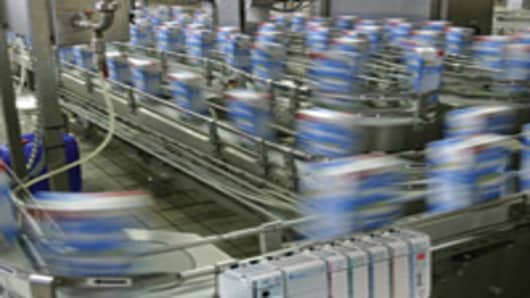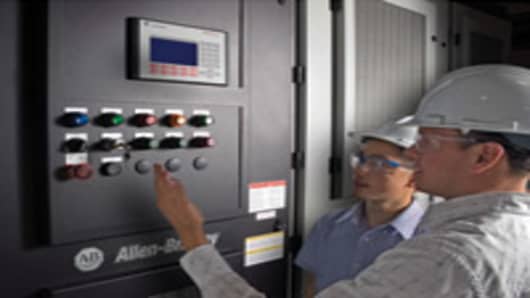Manufacturing may be poised for a quantum leap that will rival the transformation that took place nearly 100 years ago when Henry Ford revolutionized industry with the creation of the assembly line, say industry experts.
In fact, President Barack Obama has made advanced manufacturing — which incorporates the integration of information technology, human innovation, energy efficiency and waste reduction — a cornerstone in his initiative for boosting U.S. manufacturing and jobs growth.
In June 2011, Obama launched the Advanced Manufacturing Partnership, a national effort to unite industries, universities and the government to invest in the emerging technologies that will create high-quality manufacturing jobs and bolster global competitiveness. He also announced an initiative to invest $500 million to help develop advanced manufacturing technologies and jobs.
How does advanced manufacturing differ from traditional factory output? Fred Wentzel, vice president of industry relations and workforce development at the National Council for Advanced Manufacturing, says the best way to explain the difference is to look at the definitiondeveloped by his former colleague Paul Fowler.
As Fowler explains it, advanced manufacturing harnesses the efficiency of mass production and marries it to the flexibility of custom manufacturing. The goal is to respond quickly to customer demand by using high-precision information technology. Wentzel says gone are the days when manufacturers would produce "X number whether there was a market for it or not."
"We're not in a mass production mode," he says.
Wentzel notes that while advanced manufacturing is hard to quantify, it transcends all industries. Already pervasive, it is seen as a necessary tool for U.S. manufacturers under pressure from global competition.
“You see it at Boeing, at . You’re seeing it in the auto supply industry; you see it in companies like Caterpillar, Johnson Controls and Rockwell Automation— anywhere where the primary task is to find a way to make something better, cheaper and with fewer people,” he says.
Wentzel adds it is not that companies are going out of their way to reduce their number of employees, but as computers and advanced technology enter the equation, the need for large amounts of laborers diminishes while the desire for a smaller, more skilled workforce emerges.
Obama, for his part, is attempting to incorporate advanced manufacturing into his goal of doubling exports by 2015 and expanding U.S. manufacturing. In February, he called on Congress to create an $8 billion “Community College to Career Fund” to be spent over three years to train 2 million workers for careers in high-growth industries such as advanced manufacturing.
Jeff Immelt, chief executive officer of General Electric, who heads Obama’s Council on Jobs and Competitiveness, explains in the March issue of the "Harvard Business Review" just how transformational advanced manufacturing can be.
Immelt says that while the focus remains on creating top-of-the-line designs and high-quality products, by updating a 25-year-old dishwasher line, the production team at Appliance Parkin Louisville, Ky. was able to cut production time by 68 percent and reduce the space required by more than 80 percent.
By engaging the workforce at each stage from design to development to assembly, employees in Louisville have cut the time it takes to build a refrigerator—typically nine hours—in half.
Jim Davis, vice provost of IT and chief technology officer at UCLA, says technology and highly skilled workers go hand in hand.
“The shift toward smart manufacturing will transform the factory into a place in which people increase in importance and are actually interacting with the devices in much more strategic and informed ways,” he says.
Because manufacturing is becoming more automated and specialized, employers have begun to bring jobs back to the U.S. With smaller numbers of workers, the cost of labor becomes less of an issue, says Wentzel, and companies can start to focus on reducing other expenses.
Auto Boom
The automotive industry is one that is experiencing a boom as a result of advanced manufacturing and, subsequently, many jobs that had previously been outsourced are returning to the U.S.
Earlier this year, Georgia Gov. Nathan Deal announced that Japan-based ToyotaIndustries will open a $350 million compressor production plant in Jackson County. The operation, known as Toyota Industries Compressor Parts America, TICA, will be located next to TD Automotive Compressor as the two operations complement one another.
Toyota will manufacture the main parts of vehicle compressors, which will be assembled at the TD compressor plant. Currently, the main parts of vehicle compressors are imported from Japan. Bringing the manufacturing right next door avoids costly shipping delays, something Toyota faced in 2011 when its tsunami shuttered factories.
Toyota also supplies parts to , Ford, General Motors and other automotive companies. The Pendergrass plant, which is expected to open by late 2013, will create 320 jobs in the area.
Around the same time, Frank-Peter Arndt, BMW’s production chief, announced the company will invest nearly $900 million over the next three years in its Spartanburg, S.C., plant.
In addition, BMWwill add 300 new jobsthis year, raising production capacities up to 300,000 units. In 2011, the plant produced 276,065 vehicles for over 130 markets around the world, which represents a 73 percent increase over 2010.
By assisting U.S. industry in becoming more predictive, efficient and sustainable, advanced manufacturing can be transformational in offering a portal into staying competitive in the global marketplace while providing opportunities for skilled workers.



